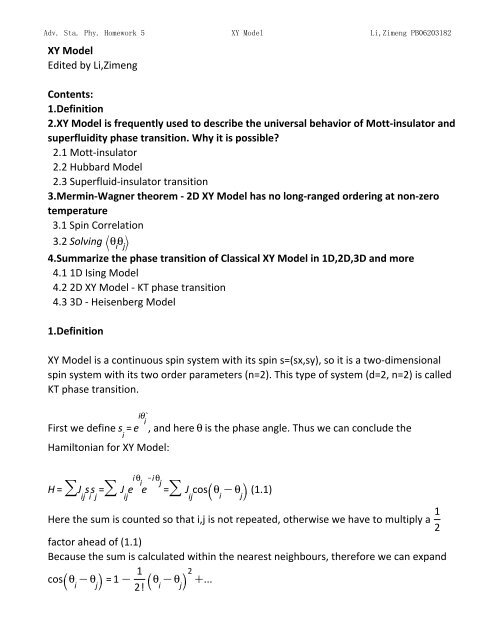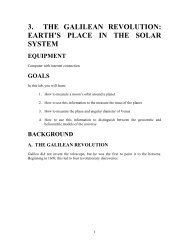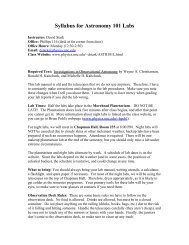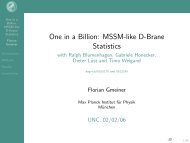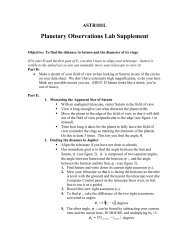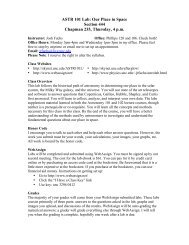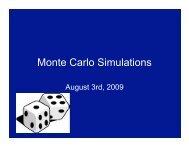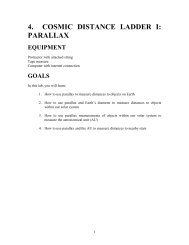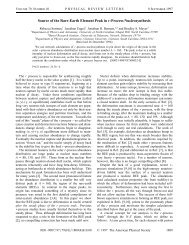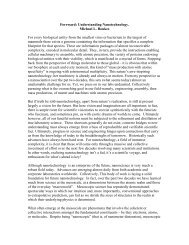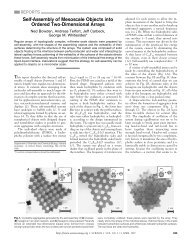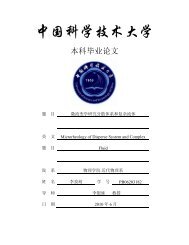Topics in Statistic Mechanics
Topics in Statistic Mechanics
Topics in Statistic Mechanics
You also want an ePaper? Increase the reach of your titles
YUMPU automatically turns print PDFs into web optimized ePapers that Google loves.
Adv. Sta. Phy. Homework 5 XY Model Li,Zimeng PB06203182<br />
XY Model<br />
Edited by Li,Zimeng<br />
Contents:<br />
1.Def<strong>in</strong>ition<br />
2.XY Model is frequently used to describe the universal behavior of Mott-<strong>in</strong>sulator and<br />
superfluidity phase transition. Why it is possible?<br />
2.1 Mott-<strong>in</strong>sulator<br />
2.2 Hubbard Model<br />
2.3 Superfluid-<strong>in</strong>sulator transition<br />
3.Merm<strong>in</strong>-Wagner theorem - 2D XY Model has no long-ranged order<strong>in</strong>g at non-zero<br />
temperature<br />
3.1 Sp<strong>in</strong> Correlation<br />
3.2<br />
4.Summarize the phase transition of Classical XY Model <strong>in</strong> 1D,2D,3D and more<br />
4.1 1D Is<strong>in</strong>g Model<br />
4.2 2D XY Model - KT phase transition<br />
4.3 3D - Heisenberg Model<br />
1.Def<strong>in</strong>ition<br />
XY Model is a cont<strong>in</strong>uous sp<strong>in</strong> system with its sp<strong>in</strong> s=(sx,sy), so it is a two-dimensional<br />
sp<strong>in</strong> system with its two order parameters (n=2). This type of system (d=2, n=2) is called<br />
KT phase transition.<br />
First we def<strong>in</strong>e , and here is the phase angle. Thus we can conclude the<br />
Hamiltonian for XY Model:<br />
(1.1)<br />
Here the sum is counted so that i,j is not repeated, otherwise we have to multiply a<br />
factor ahead of (1.1)<br />
Because the sum is calculated with<strong>in</strong> the nearest neighbours, therefore we can expand


